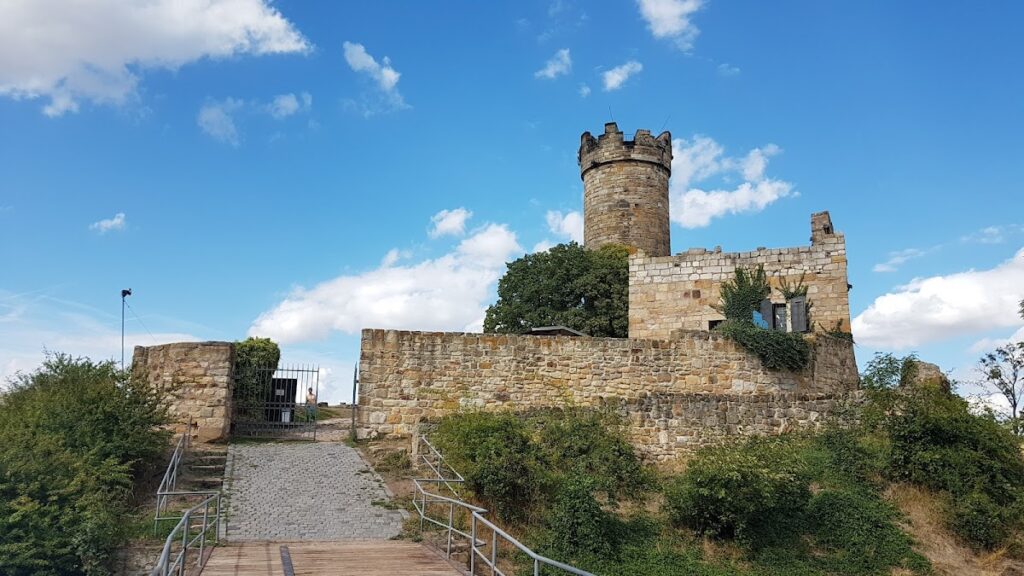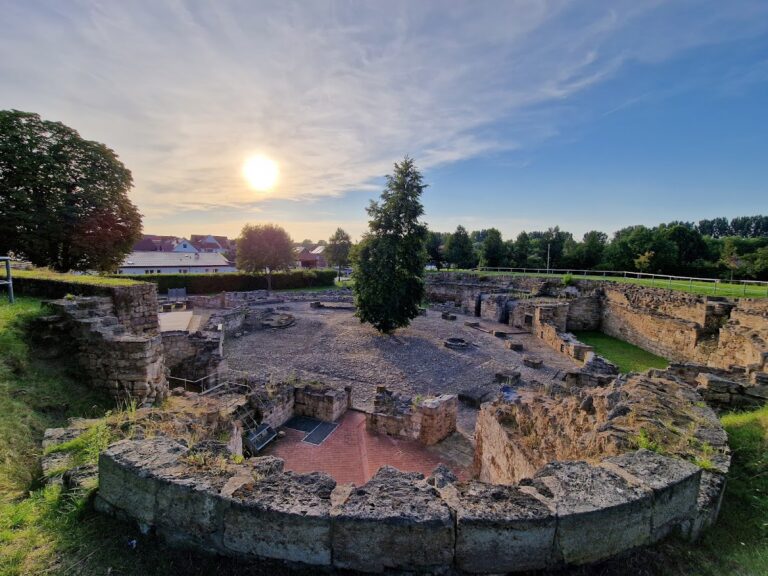Mühlburg Castle: A Historic Medieval Fortress in Germany
Visitor Information
Google Rating: 4.6
Popularity: Medium
Google Maps: View on Google Maps
Official Website: www.drei-gleichen.de
Country: Germany
Civilization: Unclassified
Remains: Military
History
Mühlburg is a historic castle site situated in the municipality of Drei Gleichen within modern-day Germany. It stands on a lofty 375-meter-high spur overlooking the village of Mühlberg and is recognized as the oldest among the Drei Gleichen castles as well as the oldest surviving structure in Thuringia. Its origins date back to the early medieval period and likely to the Thuringian Kingdom before it was conquered by the Franks in 531.
The earliest written reference to Mühlburg appears in a document from May 1, 704, which records the donation of the Castello Mulenberge by Duke Hedan II of Thuringia to the missionary bishop Willibrord, along with estates in nearby settlements. Although this record confirms the site’s importance in the early 8th century, it remains uncertain whether the fortification mentioned was at the present location or constructed from stone.
During the turn of the first millennium, the castle came under the control of the Counts of Orlamünde in the year 1000. In 1088, Emperor Henry IV attempted to seize the castle but failed in his siege, an event that underlines the castle’s strategic strength alongside the nearby Burg Gleichen. By the early 12th century, around 1130, ownership shifted to the Archbishopric of Mainz following inheritance from the now extinct Weimar-Orlamünde noble house. The castle was then granted as a fief to the Meinhard family, who later styled themselves as the Counts of Mühlburg; Count Meinhard I officially received this fiefdom in 1140.
The Meinhard family expanded their holdings by acquiring the adjacent Wachsenburg in 1220 but the line died out by 1242, prompting Mainz to reclaim the castle. In 1248, Count Berthold of Henneberg was named the first official castle captain, marking a new phase of local administration. The city of Erfurt laid siege to Mühlburg in 1310 but was unsuccessful. In 1357, Erfurt purchased the castle and reinforced it, transforming it into a fortress controlling the copper trade route through the region. The castle remained under Erfurt’s management until 1590, when the administrative jurisdiction known as Amt Mühlberg passed to Saxony-Weimar.
Over the next centuries, Mühlburg changed hands multiple times. It entered the possession of the Duke of Weimar in 1592, then the Duke of Altenburg in 1635, returned to Mainz in 1665, and ultimately came under Prussian control in 1815 after a period of French rule beginning in 1806. After 1815, ownership passed into private hands, notably Generalfeldmarschall Müffling. In the early 20th century, from 1903 to 1907, the castle’s bergfried tower was transformed into a lookout tower enhanced with battlements.
Around 1930, the castle caretaker Richard Opel uncovered the ruins of the medieval chapel dedicated to Saint Radegundis. Unfortunately, this chapel was dismantled in 1945 leaving only foundational remains visible today. Since the 1970s, local community efforts have gradually restored parts of the castle, which now houses a museum celebrating its heritage. In 1987, a memorial stone was placed within the chapel ruins to honor the 1400th anniversary of Saint Radegundis’s death, and each year an ecumenical service and procession are held to commemorate her memory. The castle’s cultural presence is further highlighted by its role in the novel “Das Nest der Zaunkönige” by Gustav Freytag, which also inspired a hiking trail linking Mühlburg to the other two Drei Gleichen castles.
Remains
The castle is strategically perched on a natural rock spur and follows a classic ridge castle layout that utilizes the topography for defense. Access to the site is from the south, along the Schlossleite ridge connecting Mühlburg with the neighboring Wachsenburg. Visitors first cross a wooden bridge spanning the neck ditch, a deep trench cut into the ridge that served as a formidable barrier against attackers. This neck ditch is part of an extensive defensive wall trench considered one of the strongest fortifications in Thuringia.
Beyond this ditch lie the remains of the zwinger wall, a secondary outer wall designed to trap and expose attackers to defenders on the castle walls. This zwinger wall connects to the broader ring wall, a circular defensive barrier encircling the core castle area. Within this enclosure, the core castle wall marks the innermost line of defense, built directly onto the natural rock outcropping. Its firm foundation made attempts at underground tunneling or mining for weakening the structure nearly impossible.
The castle’s bergfried, a tall defensive tower built in the 13th century, rises 22 meters with exceptionally thick walls measuring 2.7 meters. Its diameter of 7.4 meters provided a strong vantage point and last refuge in times of siege. This tower remains accessible and offers commanding views of the surrounding area, including the other two Drei Gleichen castles.
Fragments of the original gatehouse survive as part of the zwinger wall, although these remain limited. Near the entrance at the start of the Schlossleite ridge stands a chapel dedicated to Saint Radegundis. While the superstructure of this chapel no longer survives, archaeological excavations have revealed foundations whose age remains uncertain.
Within the castle grounds today, visitors find a small museum exhibiting medieval pottery and household objects that reflect the site’s long history. A restaurant operates on the premises, alongside a functioning mailbox and a well, all of which contribute to the castle’s ongoing use. Additionally, the local art and culture association organizes a summer open-air cinema on the castle grounds, making use of the historic setting in contemporary communal activities.
Together, these features illustrate Mühlburg’s layered history as a defensive stronghold, religious site, and center of local administration reflected in its surviving structural and archaeological remains.










